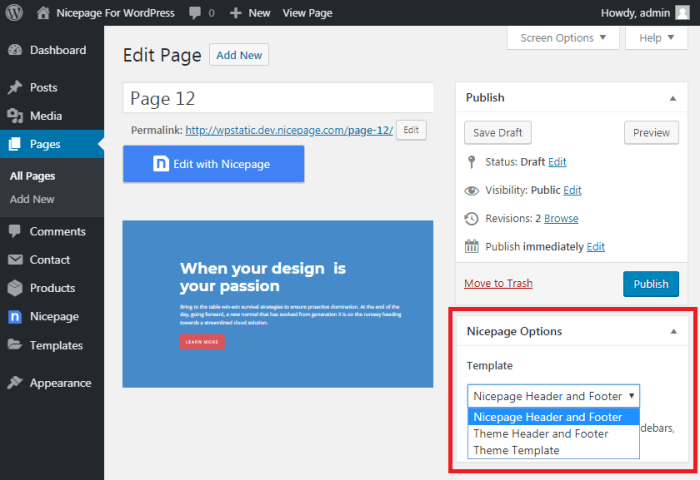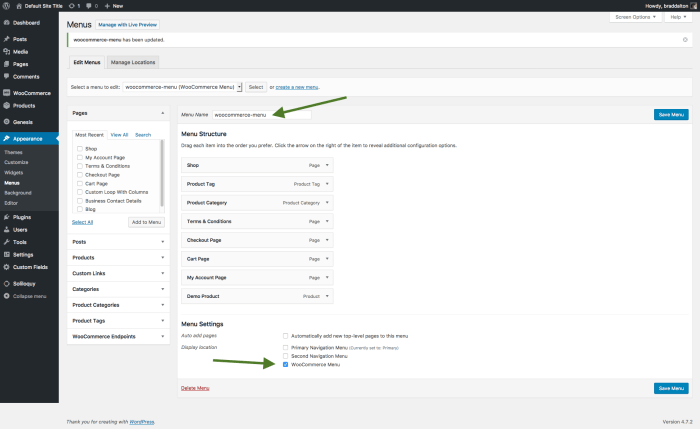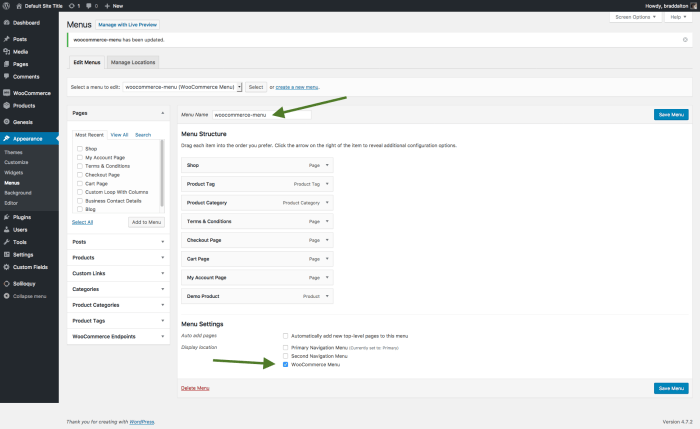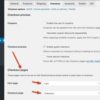WooCommerce column header reference is your guide to understanding and manipulating the tables that power your online store. From basic structure to advanced customization, this comprehensive resource dives into everything you need to know about crafting user-friendly and data-rich tables in WooCommerce.
This guide covers everything from explaining the fundamental purpose of column headers and their impact on user experience to detailed examples of how to customize existing headers, add new ones, and alter their appearance. We’ll explore various data sources, filtering and sorting techniques, formatting options, and even troubleshooting common issues.
Introduction to WooCommerce Column Headers

WooCommerce column headers are essential components of product tables, providing a structured way to display vital information about products. They define the categories of data presented, making it easy for users to quickly scan and understand the specifics of each item. Effective column headers are crucial for user experience, as they enable users to quickly filter, sort, and locate the product details they need.Column headers are more than just labels; they are the foundation for organizing and presenting data in a user-friendly manner.
A well-designed table, with clear and informative headers, improves data comprehension and reduces user frustration, leading to a more positive shopping experience.
Purpose of WooCommerce Column Headers
Column headers in WooCommerce tables serve the fundamental purpose of defining the data type for each column. This clear categorization enables users to rapidly locate and comprehend the information displayed. The impact of well-defined headers on user experience is substantial. Efficient data presentation, facilitated by headers, enhances user engagement and enables users to navigate product information with ease.
Data Types in WooCommerce Column Headers
Various data types are commonly displayed in WooCommerce column headers. These include but are not limited to:
- Product Name: Displays the name of the product, a critical piece of information for identification.
- Price: Shows the selling price of the product, enabling users to assess the value proposition.
- Stock Status: Indicates the current inventory levels, providing insights into product availability.
- SKU: A unique product identifier, facilitating tracking and inventory management.
- Categories: Categorization of the product for better organization and searching.
- Sales: Historical sales data to understand product performance.
- Reviews: Number or average rating of customer reviews.
Common Use Cases for WooCommerce Column Headers
Column headers are vital for various use cases, such as:
- Product Listing: Users can quickly scan product details to identify relevant products, based on the specific columns displayed.
- Inventory Management: The stock status column assists in real-time tracking of product availability and facilitates informed ordering decisions.
- Reporting and Analysis: Column headers facilitate the gathering of data for reports, enabling deeper insights into product performance and sales.
- Filtering and Sorting: Headers enable users to sort and filter products based on specific criteria, such as price, stock, or product name.
Example WooCommerce Table Structure
The following HTML table structure demonstrates how column headers are implemented in WooCommerce, encompassing various data types.
| Product Name | Price | Stock | SKU |
|---|---|---|---|
| Example Product 1 | $29.99 | 10 | SKU-123 |
| Example Product 2 | $49.99 | 5 | SKU-456 |
Customizing WooCommerce Column Headers
WooCommerce, a popular e-commerce platform, provides a robust framework for managing product listings. However, sometimes the default column headers don’t perfectly suit your needs. This section delves into the methods for customizing these headers, allowing for a more tailored and user-friendly shopping experience. By modifying column headers, you can improve clarity, add essential information, and enhance the overall presentation of your product listings.The ability to customize WooCommerce column headers empowers you to tailor the platform to your specific requirements.
Whether you need to add new columns, rename existing ones, or alter their order, this flexibility allows you to present your products in the most effective way possible, maximizing usability and user satisfaction.
Modifying Existing Column Headers
Renaming existing column headers is a straightforward process. WooCommerce utilizes hooks to allow developers to modify various aspects of the platform. Using these hooks, you can intercept the display of column headers and replace the default labels with custom ones. This customization is often achieved through a child theme or a plugin that overrides the default WooCommerce functions.
Adding New Column Headers
Adding new columns to WooCommerce tables requires similar techniques. You can utilize filters to inject custom columns into the product listings. This involves creating new fields in the product database and then using the appropriate hooks to display these new columns within the WooCommerce tables. The added columns will be displayed alongside the existing ones, allowing for richer product data visualization.
Changing Column Header Labels
Modifying the labels of existing column headers involves accessing the WooCommerce template files responsible for displaying the column headers. You can then alter the text content of these headers to reflect your desired labels. This is commonly done via a child theme or a plugin. For example, you could change the “Price” column header to “Product Cost”.
Altering Column Header Order
The order of column headers in a WooCommerce table can be modified by manipulating the order in which the columns are displayed. This can be achieved by using appropriate filters to alter the column array within the WooCommerce template files. This involves reordering the elements within the array that define the columns.
Customizing Column Header Appearance
Customizing the appearance of column headers, including font styles and colors, is possible through CSS styling. You can target the specific WooCommerce column header elements in your theme’s CSS file to apply custom styles. This allows you to match the visual design of the headers to the overall aesthetic of your website.
Example of a Customized WooCommerce Table
| Product Name | Custom Field 1 | Price (USD) | Availability |
|---|---|---|---|
| Product A | High Quality | $25.00 | In Stock |
| Product B | Premium Material | $50.00 | Pre-order |
This example showcases a customized WooCommerce table. The “Custom Field 1” column demonstrates an added column, while the “Price” column header is now formatted as “Price (USD)”. The appearance can be further customized with CSS.
Filtering and Sorting with Column Headers
WooCommerce’s column headers are powerful tools for managing and interacting with your product data. Beyond simple display, these headers enable dynamic filtering and sorting, significantly enhancing your ability to analyze and manipulate your product information. This section delves into the practical applications of filtering and sorting, illustrating how column headers facilitate advanced data manipulation within WooCommerce tables.Effective use of filtering and sorting capabilities improves efficiency by allowing users to quickly isolate specific product sets based on criteria and arrange data in a more meaningful order.
This ultimately simplifies product management and analysis, facilitating informed decision-making within your WooCommerce store.
Filtering Methods
Filtering data allows you to narrow down the displayed products to those that meet specific criteria. WooCommerce offers a range of filtering options, each tailored to a particular data type. For example, filtering by product categories allows you to isolate products belonging to a particular category. Similarly, filtering by product tags enables you to target products with specific tags.
Furthermore, filtering by price range allows for the selection of products within a predefined price bracket.
- Product Category Filtering: This method lets you display only products belonging to a specific category. For instance, you might want to view only ‘Electronics’ products. This filtering allows for targeted analysis and management of product groups.
- Product Tag Filtering: Filtering by tags provides an even more granular level of control. You can display products associated with specific tags, like ‘sale’ or ‘new arrivals’. This is particularly useful for promotions and special offers.
- Price Range Filtering: Setting a price range displays only products within that specific price bracket. This is helpful for price comparisons and targeted promotions. For example, you could show products priced between $10 and $50.
- Custom Field Filtering: WooCommerce’s flexibility extends to custom fields. You can create custom fields to track specific product attributes, like color or size. These fields can be incorporated into the filtering process, offering advanced product selection criteria.
Sorting Procedures
Sorting data in WooCommerce tables allows you to arrange products based on different criteria, making it easier to identify trends or patterns. This organization streamlines analysis and enhances decision-making. Common sorting criteria include product name, price, and date.
Understanding WooCommerce column header references is crucial for effective data management. A well-structured WooCommerce store, however, often needs more than just technical proficiency. That’s where a triple bottom line digital marketing agency like a triple bottom line digital marketing agency comes in. They help businesses prioritize not just profit, but also people and planet, which translates directly to stronger, more sustainable WooCommerce storefront designs.
Ultimately, mastering these column header references remains key for WooCommerce success.
- Product Name Sorting: Sorting by product name arranges products alphabetically, making it easy to locate specific products or groups of products.
- Price Sorting: Sorting by price displays products from lowest to highest or highest to lowest, providing a clear view of price ranges and facilitating price comparisons.
- Date Sorting: Sorting by date allows you to order products based on their creation or update date, useful for tracking inventory and managing products based on their timeline.
Sorting Algorithms
WooCommerce utilizes sorting algorithms to arrange products based on selected criteria. While the precise algorithm used might not be publicly documented, the common sorting algorithms employed in web applications like WooCommerce include quicksort and mergesort.
These algorithms ensure efficient sorting of product data, handling large datasets with reasonable performance.
Advanced Filtering Options
Column headers can enable advanced filtering options. For example, you might want to filter products by multiple criteria simultaneously. A filter might allow you to show products in the ‘Electronics’ category, priced between $10 and $50, and that are also tagged with ‘sale’. This demonstrates how column headers empower you to create complex and powerful filtering criteria.
Example Table
| Product Name | Price | Category | Date Added |
|---|---|---|---|
| Laptop | $1200 | Electronics | 2024-03-15 |
| Mouse | $25 | Electronics | 2024-03-10 |
| Keyboard | $75 | Electronics | 2024-03-12 |
This table demonstrates basic data organization, showcasing how products are sorted based on criteria like product name, price, and category. The date added column allows you to see when the products were added to the store. Filtering and sorting can be applied to any column in the table.
Displaying Column Header Information: Woocommerce Column Header Reference
WooCommerce column headers aren’t just static labels; they’re dynamic displays of crucial data. Understanding how to format and present this information effectively enhances the user experience and the overall usability of your WooCommerce store. This section delves into the options for presenting data in various formats within column headers, addressing complexities and optimization for large datasets.Data presented within column headers needs to be easily digestible and readily interpretable.
Whether displaying simple numbers or complex product information, proper formatting and structure are key. This section will walk through methods for presenting this information in a user-friendly manner, ensuring data is both visually appealing and functional.
Formatting Numerical Data
Numerical data, like product prices or stock quantities, should be displayed in a clear and consistent format. Currency symbols, decimal places, and thousands separators are critical for user understanding. For example, displaying a price of 999.99 USD is far more user-friendly than 999.99. The chosen format must align with the store’s branding and regional conventions.
Formatting Dates and Times, Woocommerce column header reference
Dates and times in column headers require careful consideration of the display format. A date format like YYYY-MM-DD is suitable for internal use but may be confusing to customers. Adapt the format to be more customer-friendly, perhaps using a more common format like MM/DD/YYYY or DD/MM/YYYY. Ensure the format is consistent throughout the table and aligns with user expectations.
Formatting Currency
Currency formatting is critical for accurate price display. Different currencies have different symbols and decimal separators. Using a library or plugin to handle these complexities ensures accuracy. Consider the customer’s location and tailor the currency formatting accordingly.
Handling Complex Data Types
Complex data types, such as product attributes or custom fields, require more elaborate handling. If a column displays product attributes like size and color, present them in a user-friendly way, such as displaying “Size: M, Color: Red”. For custom fields, ensure the formatting is logical and consistent.
Displaying Data in a Table Format
A well-structured HTML table is essential for presenting column header information. Use appropriate HTML table tags (
| , | ) to create rows and columns. Implement CSS for styling and responsiveness, ensuring the table adapts to various screen sizes.
“`html
“` Responsive Design for TablesResponsive design is crucial for tables. Use media queries in your CSS to adjust table layout based on screen size. This ensures optimal viewing experience across different devices. Consider techniques such as adjusting column widths or using a collapsible format for larger datasets. Managing Large DatasetsDisplaying large amounts of data in column headers can impact performance. Consider pagination or filtering options to improve the user experience. Load data dynamically as the user scrolls or interacts with the table. WooCommerce column header references are crucial for organizing your product data, but sometimes a well-structured product table isn’t enough. If you’re finding your website isn’t converting as expected, check out this helpful guide on my website doesnt convert. Understanding your customer journey and tweaking your WooCommerce product listings, like carefully chosen headers, can greatly improve sales. A solid understanding of WooCommerce column header reference is key to unlocking your store’s full potential. Column Header Interactions WooCommerce column headers are more than just labels; they’re crucial interaction points for users. Understanding how users interact with these headers and how developers can leverage those interactions is key to a smooth and intuitive customer experience. This section delves into the various ways users can engage with column headers and how to build features that enhance their experience. Clickable Column Headers for Sorting and FilteringColumn headers are often the entry point for sorting and filtering data. Making headers clickable for these actions significantly improves the user’s ability to manage and analyze product listings, orders, or other data. By implementing a sorting mechanism, users can rapidly arrange items based on the values in different columns, such as price, name, or date. Filtering further refines the display, allowing users to isolate specific subsets of data.
Hover Effects for Additional InformationHover effects can provide valuable contextual information to users without requiring a full page reload. They allow users to gain insights into column data without extensive clicking. This is particularly helpful for displaying detailed descriptions, related links, or additional information tied to the data represented in the column.
Accessibility Considerations for Interactive Column HeadersAccessible column headers are crucial for users with disabilities. Ensuring clear and consistent labeling is paramount. Using appropriate ARIA attributes can enhance screen reader compatibility and improve the overall user experience.
Implementing Hover Effects on Column HeadersA sequence of steps for implementing hover effects on column headers:
Troubleshooting WooCommerce Column HeadersWooCommerce column headers are crucial for displaying product data effectively. However, issues can arise during customization, data display, or user interaction. This section details troubleshooting steps to resolve common problems and ensure smooth functionality.Identifying and resolving issues related to column header display often involves a systematic approach. Understanding the potential causes and employing appropriate diagnostic methods are key to efficiently fixing problems. Let’s delve into the common pitfalls and their solutions. Identifying Display IssuesTroubleshooting WooCommerce column header display problems begins with careful observation. Check if the headers are missing, misplaced, or displaying incorrectly. Inspect the styling to see if any visual elements are misaligned or have unexpected formatting. Reviewing the code responsible for generating the headers can help determine if any errors exist. Analyzing the generated HTML output for the table containing the headers is essential to pinpoint the source of the issue. Customizing Header ErrorsIncorrect customization can lead to various header problems. Ensure that CSS styles applied to the column headers are correctly targeting the intended elements. Conflicting styles from plugins or themes might override the custom styles, causing unexpected behavior. Verify that custom JavaScript functions are not interfering with the WooCommerce header rendering process. Double-check that the custom header adjustments align with the WooCommerce structure and avoid breaking compatibility with existing functionality. Debugging Column Header DataData-related issues can affect how column headers appear. Inspect the data source to ensure the data is properly structured and accessible. Problems in data retrieval can cause headers to display incomplete or incorrect information. If the data source is a database, verify its integrity and that the query correctly retrieves the necessary data for the column. Validate that the data type matches the expected format for the column header. Examine the PHP code responsible for displaying the data within the column headers for any logical errors or missing values. Fixing Rendering ProblemsRendering issues might involve problems with the template files, CSS, or JavaScript. Ensure that the template files responsible for displaying the column headers are correctly integrated. Verify that the CSS styles are correctly targeting the elements and are not conflicting with other styles. Check the JavaScript code to ensure that it’s properly handling dynamic updates to the column headers. Confirm that the required libraries and frameworks are correctly included in the website’s setup. Examine the codebase for any typos or syntax errors that might be causing the rendering problem. Troubleshooting User Interaction IssuesIf column headers fail to respond to user interactions, like sorting or filtering, there might be issues with JavaScript handling the interactions. Verify that the JavaScript functions are correctly bound to the column headers. Examine the event listeners to ensure they are triggered correctly in response to user actions. Check for any conflicts between custom JavaScript and WooCommerce’s built-in scripts. Ensure that the required libraries for user interaction are properly loaded. Review the code to confirm that any custom modifications to the sorting or filtering functionality are compatible with WooCommerce’s core behavior. ClosureIn conclusion, this WooCommerce column header reference equips you with the knowledge to not only understand but also master the table elements within your WooCommerce store. Whether you’re a seasoned developer or just starting out, this resource provides a practical and insightful approach to crafting impactful and functional tables that enhance the user experience and streamline your online business. |
|---|






